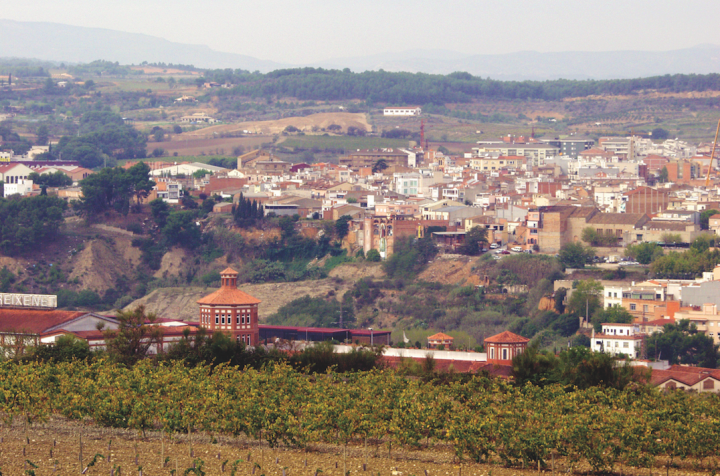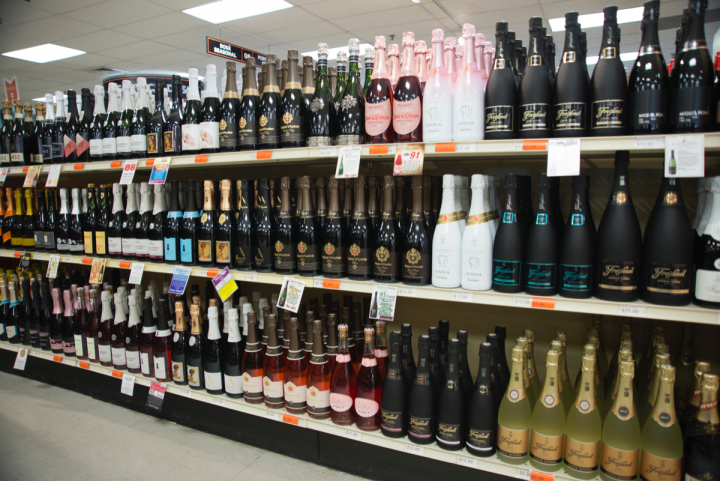
Ryan Valentine is keen on Cava, but that doesn’t always translate into positions on his wine lists. Valentine, director of beverage for Columbus, Ohio–based Cameron Mitchell Restaurants, doesn’t have a Cava on the wine list for the company’s Ocean Prime chain of 13 restaurants. Some of the smaller restaurants in the Cameron Mitchell portfolio offer Cava, however, and it’s used in sparkling cocktails in those venues as well. For Valentine, Cava’s quality and value are there, but the image is still lacking.
“For Ocean Prime, I was focused on having a range of offerings—Prosecco, California sparkling, Champagne and French sparkling—and those took the lead,” he says. “That restaurant lends itself to cachet brands being front and center. I have absolutely no objection to adding a Cava to Ocean Prime’s menu, but the sparkling wine we offer now sells so well that I’ve never thought about making that change. That doesn’t mean it won’t happen eventually. In my opinion, Cava is, dollar for dollar, as good a sparkling wine as you can get. As the sparkling category continues to mature, I think more people will discover Cava.”
John Vego, senior wine manager at Buster’s Liquors in Memphis, is also a big fan; the Cava category is thriving at Buster’s. “I’m expanding it all the time, and constantly looking for new Cava brands,” Vego says. But he explains that much of the appeal to his customers is based on price, noting that Campo Viejo, at $9.99, is a current hot seller. In general, Cava pricing at Buster’s hovers at around $10 a 750-ml., a few dollars cheaper than Prosecco and about half the price of a quality California méthode champenoise brand.
“It’s more about price,” Vego explains. “When suppliers start bumping up the price, people have got to really want to try it. Once brands get into the $15-to-$20 range, there’s Gloria Ferrer, Scharffenberger and others—they’re putting themselves in a huge range of wines that are really well liked. They’d have to demonstrate that they’re as good, if not better, than the competition, and I haven’t seen that yet.”
The lack of upward price mobility is one of a few challenges facing the Cava sector in the United States. The category has arguably higher brand recognition than its much larger Italian rival Prosecco, but retail pricing has remained below $12 or $13 a bottle for most Cava labels. That’s despite the méthode traditionelle production required for all Cavas. Tom Burnet, president of Freixenet USA, which imports the Freixenet and Seguro Viudas Cava brands, says the company “hasn’t taken any price action in either direction for some time.” Freixenet retails at $10 to $11, and Seguro Viudas is priced slightly lower at $9.50 to $10.50.

New Upscaling Efforts
Other leading Cavas are similarly priced, although some smaller brands inch their way toward the $15 mark. Patrick Mata, owner of Olé Imports, says the Naveran brand hits that price point and is seeing strong growth, a sign that the category might be moving a bit more upscale. Some producers are trying to push that further. In June 2016, the Cava Regulatory Board announced the designation of Cava de Paraje Calificado, a new premium category that will include single vineyard Cavas made with grapes from select estates deemed exceptional due to their climate or geological features.
Classified Cava must meet several requirements. First, it must be made with grapes from vines at least 10 years old and from vineyards that are hand-harvested and have a maximum yield of 8,000 kilos a hectare. The wine must also be estate-fermented and -vinified with a maximum output of 48 hectoliters per hectare, and fermented in the bottle and aged for at least 36 months as well. Finally, a certification of the wine base must be made for complete traceability from the vine to a store shelf.
Pedro Bonet, president of the Cava Regulatory Board, told the Wines of Spain trade group in a February 2017 interview that the designation was in the works for some time. “The new Cava de Paraje Calificado designation is ideal for positioning Cava at the top of the qualitative wine pyramid and for doing justice to this incredible sparkling wine,” he said. “As far as the Cava category is concerned, the new designation represents a step toward giving visibility to the singular excellence in the production of sparkling wines made in the traditional method.”
Earlier this year, 12 Pareje Calificado designations were approved for nine different companies. The next step is label approval, and then the wines can be sold in all markets. Codorníu owns three of the 12 vineyards. Mike Bartlett, president of Codorníu importer Aveníu Brands, says the designations are “a good example of what’s going on in the Cava business. They’re driving for quality, trying to change the mindset. Cava is not just low end, it’s a quality product.”
Aveníu will be importing limited quantities of those wines in the future. “It’s something we’re going to highlight, and we’ll continue to drive the quality story,” Bartlett explains, adding that the overwhelming focus will be on growing the standard Anna de Codorníu brand. “We’re three years into a six to seven year program aimed at building volume. Our shipments and depletions this year are up by 35 percent to 40 percent versus last year. A lot of that has been driven by increased distribution in chains. People are gravitating toward the product. It’s one of the few $10-to-$15 Cavas from Spain that has the Chardonnay and Pinot Noir component, which really helps with the flavor profile, making it more food friendly and more accessible.”
Freixenet’s Burnet says his company is also focusing on the higher end. “We have Freixenet Casa Sala, available in very limited quantities and retailing at around $60,” he says. “But we certainly put most of our marketing efforts below that line. There are some terrific Cavas at ultra-premium prices that I’m sure will be more prominent eventually in the United States, but today they’re not.”

Capturing Momentum
For Cava marketers, perhaps more important than moving upscale, at least in the short term, is holding their own against the expansion of Prosecco. The Italian bubbly has been growing strongly over the past several years, prompting producers of other sparklers to scramble to catch up. Aveníu’s Bartlett says consumer willingness to learn and explore bodes well. “I don’t know if people understand exactly what Cava is at this point,” he says. “It’s more of a trend of sparkling wine versus Cava specifically. People are looking for brands they know, and they’re also looking to experiment beyond Prosecco, Moscato or whatever they’ve been drinking.”
“Consumer understanding of Cava is still embryonic,” says Burnet, noting that Prosecco has done a good job at educating consumers. But he says in terms of brands, leading Cavas have more name recognition than the leading Prosecco brands. Jim Shpall, co-owner of Applejack Wine & Spirits in Wheat Ridge, Colorado, says Cava is buoyant in his store, but Prosecco still dominates. “The entire category of sparkling wines is doing well, and as the expression goes, a rising tide raises all boats,” Shpall says. “But for Prosecco, it’s a rising tide coupled with a tsunami. The problem for Cava is that many consumers, if they want a sparkling wine and they don’t want Champagne, know the word Prosecco.”
While category development for Cava may be lagging, Mata of Olé Imports believes in the long game. “Prosecco is very popular in America, but most Prosecco is produced with the charmat method, while all Cavas are fermented in the bottle like Champagne,” he notes. “It’s a more time-consuming and expensive method, but surprisingly, Cavas are less expensive than Prosecco, which is great for the consumer. Many consumers are realizing that and so Cava is becoming stronger as time goes by.”
Retailers have mixed experiences with Cava. Austin Keith, owner of the Texas retail chain Pinkie’s, says Cava doesn’t move much in his stores. And Gary Rounseville, president of M&R Liquors in South Windsor, Connecticut, says Cava is falling short. “Cava is doing okay, but most people are still looking for Prosecco because it has a rounder mouthfeel and tends not to be as dry and yeasty as Cava,” Rounseville explains, noting that at most retail establishments the number of Prosecco brands far outweighs the number of Cavas on offer.
But Vego of Buster’s Liquors says Cava is ratcheting up volume while Prosecco is slowing down. “For a while Prosecco was all people would talk about, but not anymore,” he says, noting that Cava is piquing ongoing interest because of its price-quality relationship.

Expanded Occasions
Expanded usage occasions for bubbly beverages work in favor of Cava and other sparkling wines. Cava marketers are latching on to the idea that sparkling wine isn’t just for celebrations, it’s for everyday enjoyment. And with most brands retailing below $15 or even $12 a bottle, frequent usage isn’t a big stretch. “Sparkling wine has become more food-friendly, and the use of sparkling wine in cocktails has become popular too,” Aveníu’s Bartlett says. “It’s not just Mimosas anymore—it’s a big part of the cocktail culture scene.”
Burnet says much of the marketing and advertising surrounding Freixenet and Segura Viudas zeroes in on cocktails. “We’re pushing very aggressively in mixing both brands with cocktails, and also in Segura’s connection with food,” he says. “Our target is millennial women. Social media is a big part of that, and we do a lot more experiential events like tastings, with fewer print ads and less old-school marketing. We’re going after a different crowd than 10 years ago.”
Olé Imports’ Mata says he expects the millennial audience to shift to Cava eventually. “Millennials enjoy sweeter-style wines in general, so I can see why Prosecco is popular,” he says. “But as millennials develop a taste for drier wines, which will happen over time, Cava should do well. There are a lot of good things on the Cava side—how it’s made, its price and quality. These characteristics will make Cava a strong category. As people become more educated that’s going to benefit Cava immensely.”